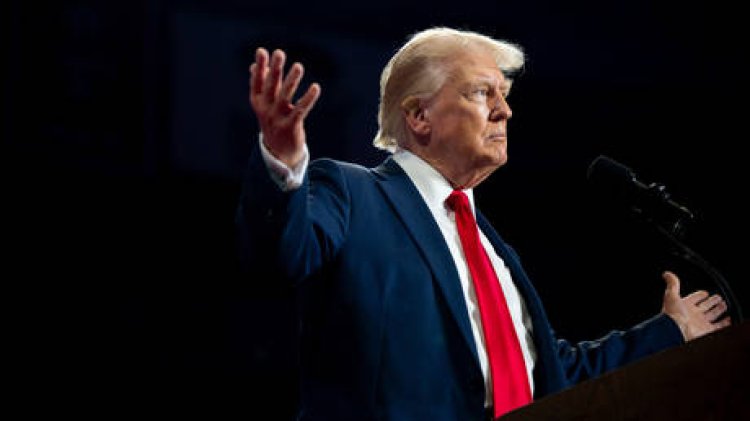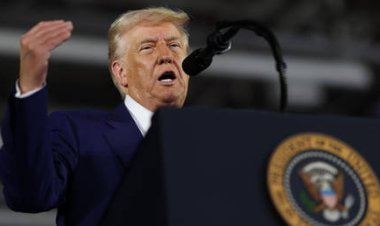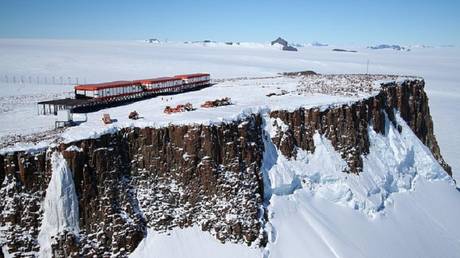Ivan Timofeev: "This late Soviet leader’s legacy is a warning to Trump"
In contrast to Mikhail Gorbachev, Trump is fully aware that he is not concerned with being liked. This awareness contributes to the effectiveness and volatility of his disruptive approach.

In Donald Trump’s second term, U.S. foreign policy has taken a series of sharp, often surprising turns. His administration has shifted from seeking rapprochement with Russia to publicly criticizing Ukraine's Volodymyr Zelensky; from rebuking European allies for democratic shortcomings to initiating trade wars against traditional partners; from entertaining ambitions of acquiring Greenland and suggesting Canada could become the “51st state,” to dismantling iconic soft power institutions like USAID, Radio Free Europe, and Voice of America.
It’s tempting to view this as a phenomenon unique to Trump – but history offers a compelling parallel. Four decades ago, a newly appointed Soviet leader, Mikhail Gorbachev, came to power. What began as a cautious shift in Moscow’s external posture soon transformed into a sweeping “new thinking” in foreign affairs. Gorbachev ended the Cold War – but also oversaw the disintegration of the Soviet Union. Could Trump play a similar role for the United States? How far could his initiatives go – and what might they mean for America’s future?
On the surface, Trump and Gorbachev appear to be worlds apart. One grew up wealthy, the other in modest circumstances. One is brash and combative, while the other was warm and conciliatory. Trump thrives in cutthroat markets and democratic elections; Gorbachev advanced through backroom deals and party hierarchies. Trump represents the postmodern digital age; Gorbachev was a modernist reformer trusting in rational governance and global norms. Trump advocates for nationalism and self-interest; Gorbachev championed universal values.
Yet despite these differences, both sought to overhaul systems they perceived as bloated and unsustainable. Each attempted to “clean up liabilities” and eliminate outdated, overextended commitments.
Gorbachev’s Gamble
By the 1980s, the Soviet Union faced stagnation. The Brezhnev era, once romanticized for its “stability,” fostered corruption, economic inertia, a detached ruling class, and widespread alcoholism. A vast military budget diverted resources to support Warsaw Pact allies, subsidize socialist regimes across the globe, and maintain parity with the U.S. and NATO. Relations with China were hostile, having descended into a quiet cold war since the late ‘60s, even as Beijing sought warmer ties with Washington. The costly quagmire in Afghanistan further strained resources.
While some actions might have been defensible for strategic deterrence or ideological solidarity, they increasingly proved counterproductive. The arms race yielded diminishing returns, allies became dependent, and global influence shrank.
Gorbachev's solution was de-escalation. He enacted arms reduction treaties to decrease bloated arsenals, thawed relations with China, and reduced troop levels in Afghanistan. For a time, Soviet diplomacy gained moral authority, and Gorbachev's reputation soared.
However, this momentum was short-lived. Many of Moscow’s concessions turned out to be one-sided. Missiles were dismantled with insufficient reciprocal gains. Gorbachev supported German reunification without securing firm guarantees against NATO’s eastward expansion. By the late ’80s, Eastern Europe erupted in peaceful revolutions, toppling one socialist regime after another. Unlike in 1968 Czechoslovakia, the USSR refrained from military intervention.
As Moscow's control weakened, it became apparent that the Soviet Union was losing its leverage over NATO and its sphere of influence. More critically, liberalization at home – including economic reforms, government restructuring, and glasnost – triggered an uncontrollable chain reaction. The legitimacy of the state eroded, nationalist sentiments surged in the republics, and attempts to slow the unraveling with half-measures only hastened the collapse. Gorbachev’s cleanup campaign resulted not in renewal, but in ruin.
Trump’s Turn
Trump, too, initiated his presidency with a drive to shed what he considered unnecessary burdens. He argued that the U.S.–Russia standoff had ensnared Washington in a costly “double deterrence” trap. From his viewpoint, Ukraine had become a black hole for American resources, costing billions in military and financial support – despite Russia posing no existential threat to the U.S.
After all, Russia is a capitalist state, once deeply integrated into the global economy. Its attempts to assert dominance in its “near abroad” resemble the U.S. response to Soviet missiles in Cuba. Additionally, its focus on traditional values is more defensive than expansionist – differing significantly from communism’s previous ideological challenge to the West.
Given this perspective, why maintain a disproportionate U.S. investment in a standoff with Moscow? Especially when, three years into Russia’s war in Ukraine, the West has seen little decisive success? While Ukraine has resisted invasion, it has not turned the tide. Russia, despite being battered, has remained intact, avoiding political or economic collapse while continuing to support America’s adversaries.
In this light, pursuing strategic compromise with Moscow doesn’t seem naive; it appears rational.
This leads to a broader discussion: Should the U.S. continue to uphold the Cold War’s institutional legacy? The Cold War ended with a sweeping American victory – militarily, economically, and ideologically. However, is the same strategy capable of navigating today’s multipolar world? Holding on to Cold War logic has yielded unintended consequences. Instead of functioning as a reliable partner, Russia has become a dangerous wild card, while new powers from China to regional players like North Korea are challenging U.S. influence. The global burden on Washington grows increasingly heavier, even as its returns diminish.
A Fractured Alliance
Trump’s reassessment of traditional alliances has extended further than any recent administration. The idea of annexing Greenland would be a shocking affront to one of America’s closest allies. Canada, too, has found itself on edge, while Trump’s trade conflicts with friendly nations have heightened strains – though, to be fair, past U.S.–Japan tensions also saw similar turns.
What’s becoming evident is that the traditional Atlantic alliance, as conceived over the past 30 years, can no longer be taken for granted. Washington is demanding tangible returns – now. This is not solely Trump's doing. He is surrounded by a younger, energetic cadre of allies. Should Trump exit the political stage, Vice President J.D. Vance would likely continue this path – perhaps with even greater zeal.
Collapse or Course Correction?
Could America follow the path of the USSR? Currently, that seems unlikely. The U.S. possesses significantly greater institutional resilience. It’s not merely about economic size – the Soviet Union was massive, too – but about adaptability. The American system can absorb shocks, even from disruptive figures like Trump, and pivot back without undermining its fundamental principles.
Gorbachev, in contrast, was constrained by his idealism. His vision of peace paralyzed him during moments that required assertive action. Trump, however, is already perceived as a villain by many U.S. allies, which affords him more room for decisive action.
With the flexibility of America’s systems behind him, Trump may feel justified in pushing boundaries. In doing so, longstanding allies may find themselves not merely in supporting roles, but as subjects of experimentation.
James del Carmen for TROIB News
Find more stories on Business, Economy and Finance in TROIB business












